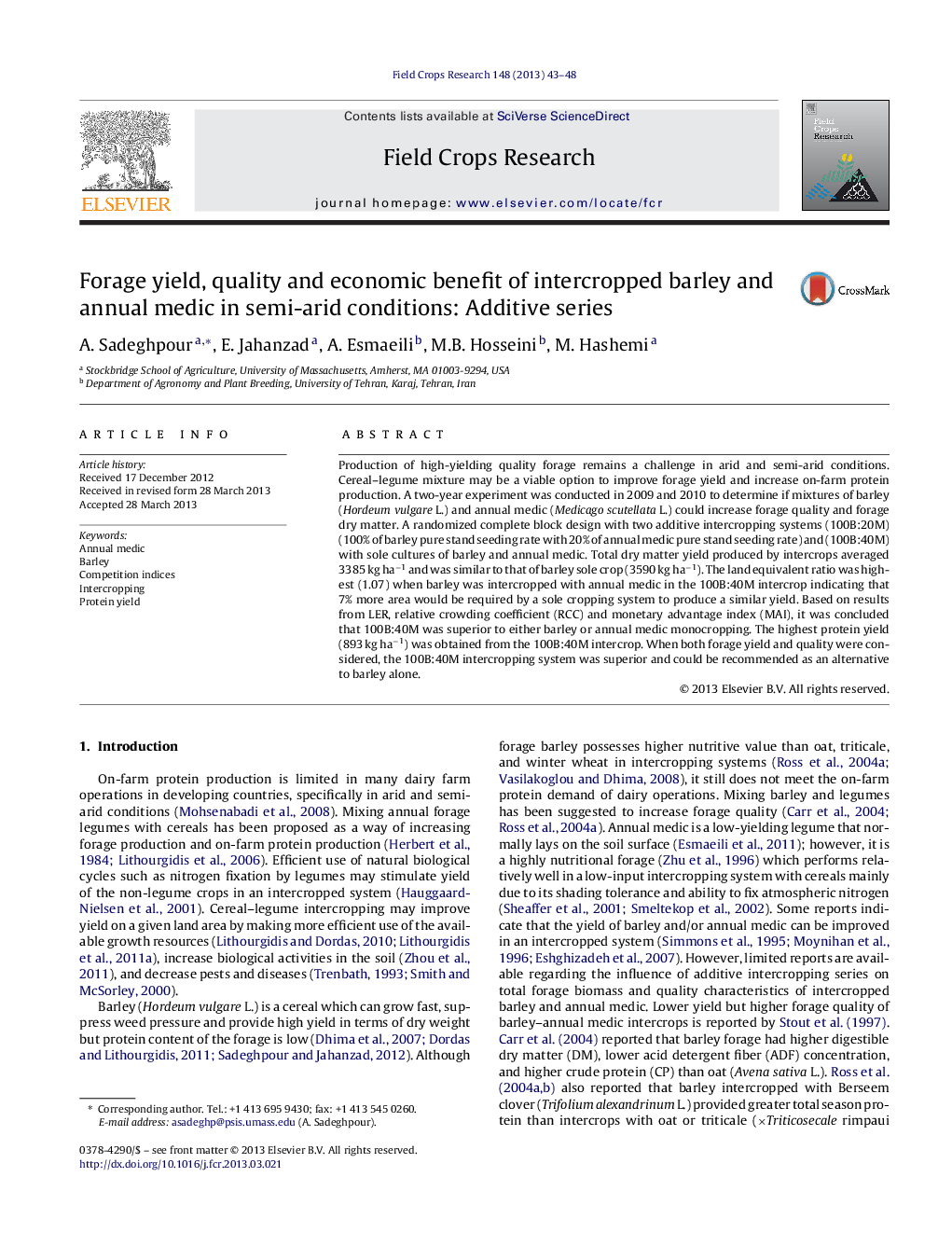| Article ID | Journal | Published Year | Pages | File Type |
|---|---|---|---|---|
| 4510197 | Field Crops Research | 2013 | 6 Pages |
•On-farm protein production was increased in a barley–annual medic intercropping system.•Intercropped barley–annual medic was superior to monocultures with respect to both land equivalent ratio and monetary advantage index.•Forage produced in intercropping ratios was superior in relative feed value to barley grown alone.
Production of high-yielding quality forage remains a challenge in arid and semi-arid conditions. Cereal–legume mixture may be a viable option to improve forage yield and increase on-farm protein production. A two-year experiment was conducted in 2009 and 2010 to determine if mixtures of barley (Hordeum vulgare L.) and annual medic (Medicago scutellata L.) could increase forage quality and forage dry matter. A randomized complete block design with two additive intercropping systems (100B:20M) (100% of barley pure stand seeding rate with 20% of annual medic pure stand seeding rate) and (100B:40M) with sole cultures of barley and annual medic. Total dry matter yield produced by intercrops averaged 3385 kg ha−1 and was similar to that of barley sole crop (3590 kg ha−1). The land equivalent ratio was highest (1.07) when barley was intercropped with annual medic in the 100B:40M intercrop indicating that 7% more area would be required by a sole cropping system to produce a similar yield. Based on results from LER, relative crowding coefficient (RCC) and monetary advantage index (MAI), it was concluded that 100B:40M was superior to either barley or annual medic monocropping. The highest protein yield (893 kg ha−1) was obtained from the 100B:40M intercrop. When both forage yield and quality were considered, the 100B:40M intercropping system was superior and could be recommended as an alternative to barley alone.
